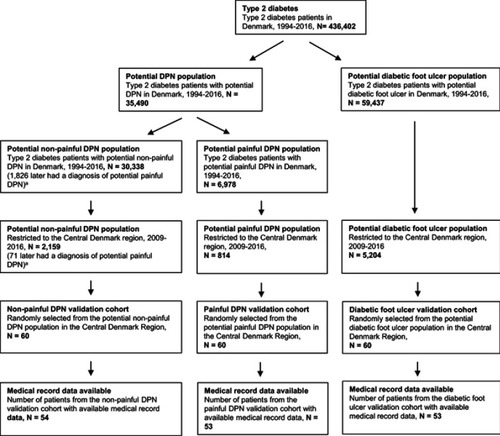Figures & data
Figure 1 Flowchart of study population. Overview of patient selection. aOf the 30,338 patients with potential non-painful DPN, 1826 later fulfilled the criteria for potential painful DPN. Thus, these patients are included in both the non-painful and painful DPN populations at two distinct time points. Likewise, after restricting to the Central Denmark region, 2009–2016.
Abbreviation: DPN, diabetic polyneuropathy.

Table 1 Algorithms of in- and outpatient discharge codes and prescription codes used to identify patients with painful and non-painful DPN and diabetic foot ulcer
Table 2 Descriptions of symptoms and signs in both feet, and diagnostic test results used to verify DPN in the medical records
Table 3 Descriptive data of hospital contacts of potential painful and non-painful DPN and potential diabetic foot ulcer identified using ICD-10 hospital codes and/or surgery in the DNPR and prescription codes in the NHSPD from 2009 to 2016
Table 4 Numbers and positive predictive values of potential DPN and diabetic foot ulcer
